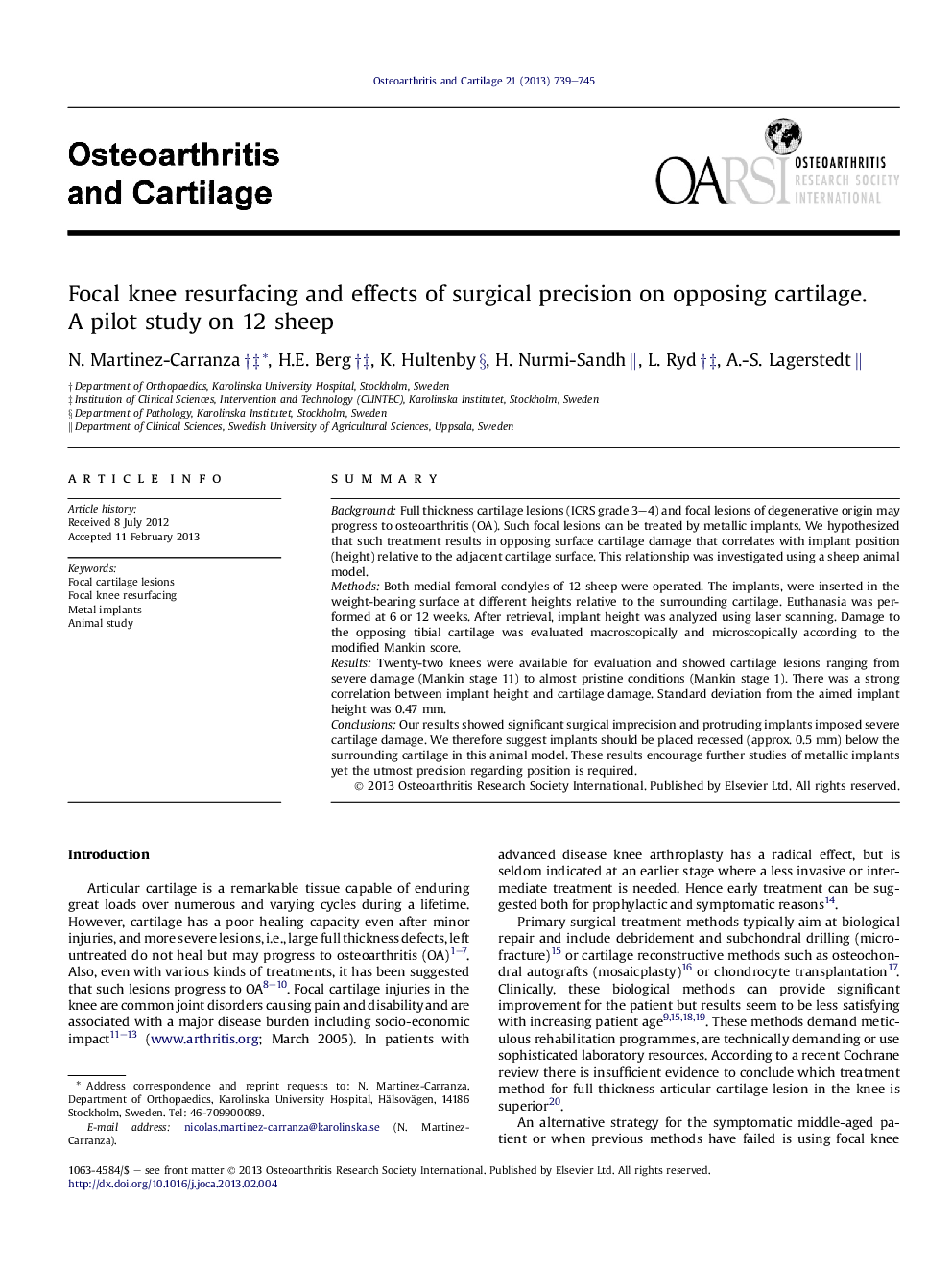| Article ID | Journal | Published Year | Pages | File Type |
|---|---|---|---|---|
| 3379738 | Osteoarthritis and Cartilage | 2013 | 7 Pages |
SummaryBackgroundFull thickness cartilage lesions (ICRS grade 3–4) and focal lesions of degenerative origin may progress to osteoarthritis (OA). Such focal lesions can be treated by metallic implants. We hypothesized that such treatment results in opposing surface cartilage damage that correlates with implant position (height) relative to the adjacent cartilage surface. This relationship was investigated using a sheep animal model.MethodsBoth medial femoral condyles of 12 sheep were operated. The implants, were inserted in the weight-bearing surface at different heights relative to the surrounding cartilage. Euthanasia was performed at 6 or 12 weeks. After retrieval, implant height was analyzed using laser scanning. Damage to the opposing tibial cartilage was evaluated macroscopically and microscopically according to the modified Mankin score.ResultsTwenty-two knees were available for evaluation and showed cartilage lesions ranging from severe damage (Mankin stage 11) to almost pristine conditions (Mankin stage 1). There was a strong correlation between implant height and cartilage damage. Standard deviation from the aimed implant height was 0.47 mm.ConclusionsOur results showed significant surgical imprecision and protruding implants imposed severe cartilage damage. We therefore suggest implants should be placed recessed (approx. 0.5 mm) below the surrounding cartilage in this animal model. These results encourage further studies of metallic implants yet the utmost precision regarding position is required.
